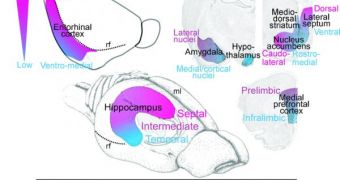People often take for granted traits of their brain that have had experts puzzled for generations. That is to say, for example, they don't know exactly how the part of the cortex that deals with memory operates when they need to find the car they parked in a very busy supermarket parking lot. The scientists also wonder how the brain is capable of learning detailed sketches of a place in just the few seconds it takes for an individual to get out of the car, close it, and then head for the entrance.
Remembering one's car location certainly requires some cue points, which the mind automatically takes in, and oftentimes without the conscious part ever knowing about. And, on most occasions, people are directed to their car when existing the supermarket without even making a conscious effort in that regard. Researchers have hypothesized for a long time that the brain sets its own cue points when it realizes that it needs to remember something later on. But exactly how it does that has remained a mystery until recently, ScienceDaily reports.
In a new scientific investigation, paper author Tobias Bast, from the University of Nottingham, University of Edinburgh researchers Iain Wilson and Richard Morris, and expert Menno Witter from the Norwegian University for Science and Technology (NUST), have teamed together and begun to look at the part that the elongated structure under each of our temporal lobes, commonly known as the hippocampus, plays in storing, retrieving and interpreting short- and long-term memories.
For the study, the team used unsuspecting rats, a maze, and a water platform. They selectively disabled portions of the rats' brains, using a natural neurotoxin, and then observed the animals' behavior in the maze. The location of the platform changed every day, and the goal of the research was to find out which rat could find it again, and which could not. By comparing affected brain regions in the rats that could not find the platform the next day, they hoped to be able to identify the specific region of the hippocampus that was directly involved in memory retrieval and interpretation.
Studies revealed that the “septal” and “temporal” hippocampus formations were the ones responsible for the rats forgetting where their platform was. “People often focus on memory deficits when thinking about the significance of aberrant hippocampal function. But our new findings highlight the important hippocampal links to behavioural control. We plan to build on these findings and examine the possibility that aberrant hippocampal function – depending on where in the structure it occurs and to which extent – may give rise to selective memory deficits, as well as to more profound disruptions of behavioural control,” Dr. Bast said.

 14 DAY TRIAL //
14 DAY TRIAL //